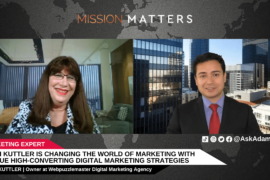SEO and Web Design are two inseparable components that make up a dynamic and more attractive website. The absence of either of them can cause a slowdown of a website’s overall quality and decrease its capacity to compete through search engine visibility.
As quality and visibility are two major factors that can help propel a website on top of the competition, it is quite important to address issues that are commonly disregarded by non-SEO practitioners, more specifically web designers.
The following are the most common SEO mistakes committed by web designers and tips on how to correct them.
1. Bad Choice in URL Structure – In SEO, a URL structure is given importance as it can affect how search engines or potential visitors can easily find your website. A bad choice in URL structure can surely affect your search engine visibility, thus a URL structure that is both friendly to search engines and people should be used. A friendly URL structure is commonly composed of the domain name and followed by page title (i.e. http://www.mywebsite/mypage not http://www.mywebsite/p?123).
2. Splash Page Creation – This is a common mistake done by web designers most especially those ones who have no knowledge about SEO. Creating any graphic entrance (i.e. loading page animation, “enter here” whole page banner) on a website’s homepage, restricts search engine bots to easily index its contents. If you created your website to increase search traffic, get rid of splash pages.
3. Not Optimizing the Image Alt Attribute – As most web spiders are programmed to read textual content, optimizing your website images to get easily find by search engines can also boost your search traffic. You can optimize your images by using relevant keywords or description on your alt attribute to help web spiders find your content easily. Failure to optimize your images decreases your chances of pushing your website on top of the search engine results pages (SERPs).
4. Unnecessary use of Ajax – Some web designers tend to overuse Ajax by putting unnecessary applications on their websites. Though this can aesthetically improve a website’s appearance, it is also the major cause why no search engine bots will be able to “crawl” or index your contents. If you want to make your website search engine friendly, then avoid using this scripting language.
5. Inappropriate use of Header Tags – Header tags (i.e. H1, H2, H3, H4) are basic elements to keep your page titles and subtitles in proper hierarchy. Always use the H1 tag for the header title and H4 for the least relevant texts. Search engine bots start crawling from the top to the bottom of your page. The H1 tag in your title indicates that it is the most important description of your website and it needs to be indexed first before the rest of your website’s contents.
6. Uncrawlable Flash Menus – This is already a common knowledge in web design and SEO. Web spiders can’t index flash pages, thus it would be wise to avoid using them.
7. Duplicate Website Title Tags – This is another common mistake that sometimes causes so much trouble as Google is very strict when it comes to duplicate contents. Avoid duplicate title tags by ensuring that each title in every page of your website is unique from each other.
If you find this article helpful, you may subscribe to our Dallas Internet Marketing Blog eNews & Updates. Look for our subscription box on the bottom right corner in our home page, enter your email, and hit subscribe.
This blog post is brought to you by www.oneseocompany.com, a Dallas SEO & Internet Marketing Company.




